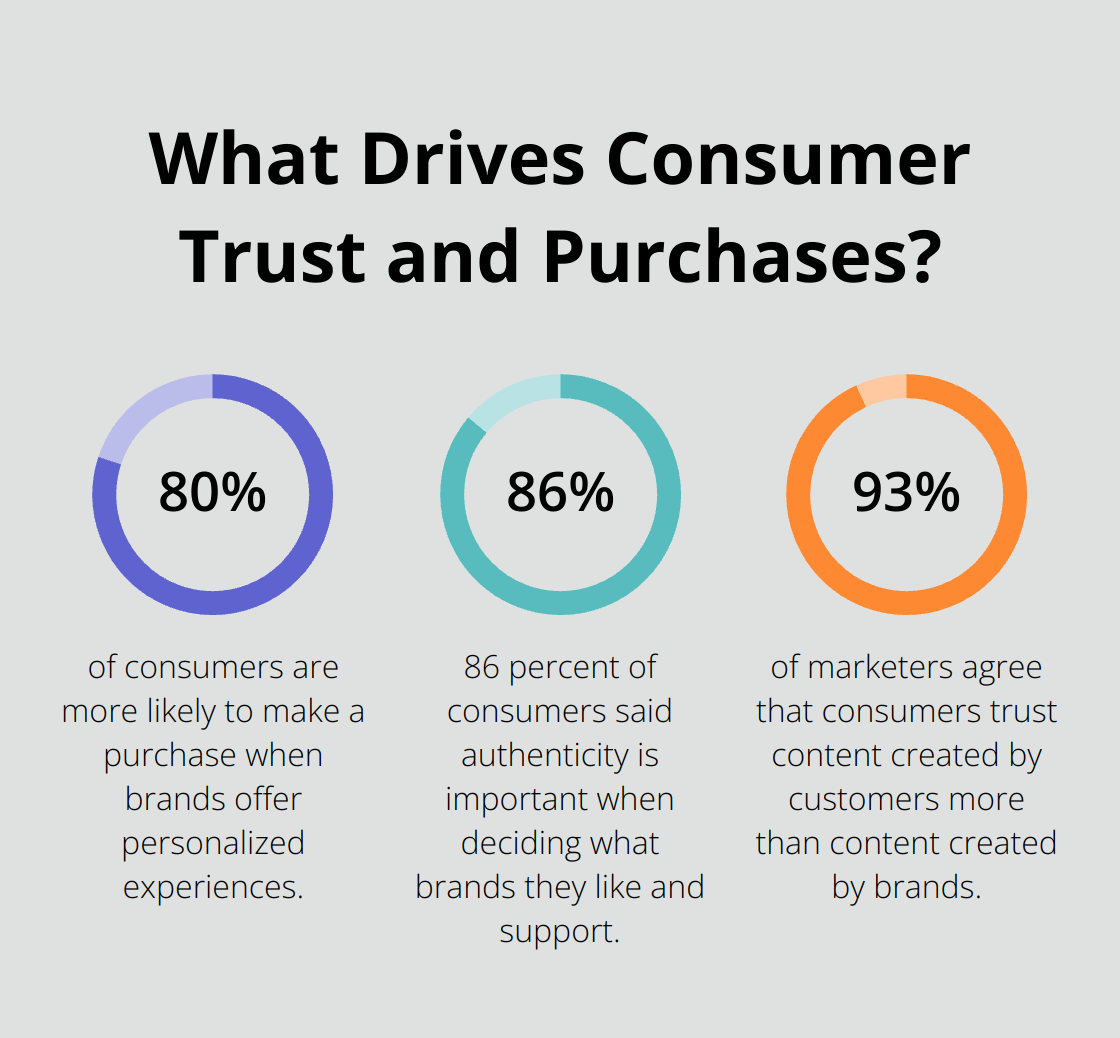The last decade has seen marketing campaigns that have redefined the industry. At Made Simpler, we’ve analyzed the best marketing campaigns of the last decade to bring you our top picks.
These campaigns didn’t just boost sales; they sparked conversations, changed perceptions, and left lasting impressions on audiences worldwide. Get ready to explore the strategies that made these campaigns stand out and shape the future of marketing.
What Makes a Marketing Campaign Truly Great?
Brand Impact That Lasts
Great marketing campaigns create more than temporary buzz; they leave lasting impressions. Old Spice’s “The Man Your Man Could Smell Like” campaign exemplifies this. It didn’t just boost sales; it revitalized the brand’s image entirely. Old Spice body wash sales increased 107% compared to the last year, turning the once dated brand into the number one body wash for men.
Tech-Savvy Strategies
Innovative technology use can transform a campaign from ordinary to extraordinary. Spotify’s annual “Wrapped” campaign stands out as a prime example. By using user data to create personalized year-in-review summaries, Spotify has seen significant engagement with this campaign.
Measurable Success
The best campaigns deliver concrete results. The ALS Association’s “Ice Bucket Challenge” proves this point. This viral sensation raised substantial funds in a short period. Such a figure doesn’t just impress; it changes the game for non-profit organizations.
Cultural Resonance
Top-tier campaigns tap into the cultural zeitgeist. Always’ “#LikeAGirl” campaign didn’t just sell products; it challenged societal norms. The campaign had a significant impact on how girls viewed the phrase “like a girl” after watching the campaign video.
Multi-Faceted Excellence
A truly great marketing campaign doesn’t excel in just one area; it shines in multiple aspects. It creates a memorable experience that resonates with the audience long after they’ve seen it. This multi-faceted approach ensures maximum impact and sets the stage for long-term success.

As we move forward, we’ll explore specific campaigns that have mastered these elements, shaping the marketing landscape of the past decade.
What Campaigns Defined Marketing in the 2010s?
The 2010s witnessed marketing campaigns that not only boosted sales but also transformed societal perceptions. Let’s explore five campaigns that left an indelible mark on the marketing landscape.
Old Spice: Redefining Masculinity
Old Spice’s “The Man Your Man Could Smell Like” campaign revolutionized male grooming marketing. Launched in 2010, it featured Isaiah Mustafa delivering rapid-fire monologues in absurd scenarios. The campaign’s success was staggering:
- Old Spice Red Zone body wash sales had increased 60% from the previous year
- The brand’s Facebook interaction increased by 800%
- Website traffic jumped by 300%

The campaign’s success stemmed from its ability to appeal to both men and women, using humor to break down traditional masculine stereotypes.
Dove: Challenging Beauty Standards
Dove’s “Real Beauty Sketches” campaign, launched in 2013, tackled women’s self-perception head-on. The campaign featured a forensic sketch artist drawing women based on their own descriptions and then based on a stranger’s description. The differences were stark, highlighting how women often underestimate their beauty.
The campaign video became the most watched video ad of all time, with over 114 million views in its first month. More importantly, it sparked a global conversation about beauty standards and self-esteem.
ALS Association: Viral Philanthropy
The Ice Bucket Challenge, which went viral in 2014, proved that social media could serve as a powerful tool for non-profit organizations. Participants dumped ice water over their heads and challenged others to do the same or donate to ALS research.
The campaign raised $115 million for the ALS Association in just eight weeks. This influx of funds led to significant advancements in ALS research (including the discovery of a new ALS gene, NEK1). The campaign’s success lay in its simplicity, shareability, and the sense of community it created.
Always: Empowering a Generation
Always’ #LikeAGirl campaign, launched in 2014, turned a phrase often used as an insult into a powerful statement of empowerment. The campaign video, which showed how people of different ages interpreted the phrase “like a girl,” garnered over 85 million views on YouTube from 150+ countries.
Since the launch, it’s been attached to overwhelmingly positive sentiment, becoming a symbol of female empowerment around the globe. The campaign’s success stemmed from its ability to challenge societal norms and create a movement.
Spotify: Personalization at Scale
Spotify’s Wrapped campaign, launched in 2016, set a new standard for personalized marketing. By presenting users with a customized summary of their listening habits, Spotify created a highly shareable, eagerly anticipated annual event.
In 2020, 60 million users engaged with the Wrapped campaign, sharing their results across social media platforms. The campaign’s success lies in its ability to leverage data to create a personal, emotional connection with users, while also encouraging social sharing and brand engagement.
These campaigns demonstrate the power of emotional storytelling, social responsibility, and innovative use of technology in marketing. They’ve set new benchmarks for engagement, brand loyalty, and social impact. As we move forward, we’ll examine the emerging trends that these successful campaigns have inspired in the marketing world.
What’s Shaping Marketing Today?
The landscape of marketing continues to evolve, and new trends drive successful campaigns. Let’s explore the key factors that shape today’s marketing strategies and influence brand success.
The Power of Authenticity
Consumers gravitate towards brands that showcase genuine values and social responsibility. A study revealed that 86 percent of consumers said authenticity is important when deciding what brands they like and support. This trend manifests in campaigns like Patagonia’s “Don’t Buy This Jacket” initiative, which paradoxically increased sales by 30% by emphasizing sustainability over consumerism.
Data-Driven Personalization
Personalization has become a cornerstone of effective marketing. According to Epsilon, 80% of consumers are more likely to make a purchase when brands offer personalized experiences. Netflix exemplifies this trend, with its recommendation algorithm. Brands can create highly targeted campaigns that resonate on an individual level by leveraging user data.
Immersive Brand Experiences
Interactive and immersive experiences captivate audiences like never before. Augmented reality (AR) and virtual reality (VR) technologies lead this trend. For instance, IKEA’s AR app allows customers to visualize furniture in their homes and has been downloaded over 35 million times. These technologies not only engage consumers but also provide practical value, enhancing the overall brand experience.
The Rise of User-Generated Content
User-generated content (UGC) and influencer collaborations have become powerful tools in a marketer’s arsenal. Tint reports that 93% of marketers agree that consumers trust content created by customers more than content created by brands. GoPro’s success largely stems from its UGC strategy, with user-submitted content accounting for a significant portion of its social media presence and driving brand engagement.
Seamless Omnichannel Approaches
Modern consumers expect a consistent brand experience across all platforms. A study by Harvard Business Review found that omnichannel customers spend 10% more online than single-channel customers. Disney excels in this area, offering a seamless experience from its website to its mobile app and in-park technology, enhancing customer satisfaction and loyalty.

These emerging trends highlight the importance of authentic, personalized, and engaging consumer experiences in modern marketing strategies. Companies that adapt to these trends (while maintaining focus on their core values) will likely see increased success in their marketing efforts.
Final Thoughts
The best marketing campaigns of the last decade have redefined industry standards. These campaigns created emotional connections, leveraged innovative technologies, and addressed societal issues. They didn’t just sell products; they sparked conversations and changed perceptions on a global scale.

Modern marketing strategies now prioritize authenticity, personalization, and multi-channel approaches. Data-driven content, user-generated campaigns, and social media amplification have become powerful tools for creating brand loyalty and spreading messages effectively. The future of marketing will likely see increased use of AI, AR, and VR technologies to create hyper-personalized and immersive brand experiences.
At Made Simpler (https://made-simpler.com), we offer scalable, high-quality marketing solutions enhanced by AI technology. Our comprehensive services are designed to help businesses navigate this complex landscape and achieve significant returns on investment. As marketing continues to evolve, the most successful brands will be those that innovate, inspire, and create meaningful experiences for their audiences.

